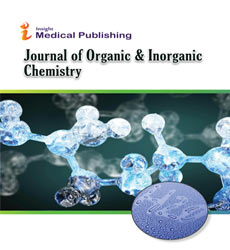Tricyclic flavonoids with 1,3-dithiolium substructure
Sarbu L
Alexandru Ioan Cuza University of Iasi, Romania
Citation: Sarbu L G, Tricyclic flavonoids with 1,3-dithiolium substructure, Organic Chemistry Congress 2020, 3rd International Conference on Organic Chemistry, July 23,2020, pp.07
Abstract
The synthesis of new 3-dithiocarbamic flavonoids has been accomplished by the reaction of the corresponding 2-hydroxyaryl dithiocarbamates with aminals. These flavonoids were obtained as a mixture of diastereoisomers, the anti isomer being the major one. The heterocyclization of these compounds provided a little-known class of tricyclic flavonoids bearing a 1,3-dithiolium-2-yl ring fused at the 3,4-carbon positions of the benzopyran moiety. Sulfur containing flavanones and tricyclic flavonoids were tested for antibacterial activity against Staphylococcus aureus ATCC 25923 (Gram-positive) and Escherichia coli ATCC 25922 (Gram-negative), using disc diffusion assay with gentamicin as reference and minimum inhibitory concentrations were determined where activity was found present. While the tested flavanones did not yield the desired results, good antibacterial activities were recorded for the tricyclic flavonoids. The introduction of the 1,3-dithiolium cation produced results comparable to those of gentamicin and in some cases, MIC values were less than 1g/ml. The ion-dissociation vs. formation of a tight ion pair appears to be significant on how cationic tricyclic flavonoids interact with bacteria. The major component of bacterial cell wall is represented by negatively charged phosphatidylethanolamine (70%). Thus, the positively charged 1,3-dithiolium flavonoids target the oppositely charged biological structures such as cell walls of microorganisms which leads to the leakage of intracellular substances.
Open Access Journals
- Aquaculture & Veterinary Science
- Chemistry & Chemical Sciences
- Clinical Sciences
- Engineering
- General Science
- Genetics & Molecular Biology
- Health Care & Nursing
- Immunology & Microbiology
- Materials Science
- Mathematics & Physics
- Medical Sciences
- Neurology & Psychiatry
- Oncology & Cancer Science
- Pharmaceutical Sciences

